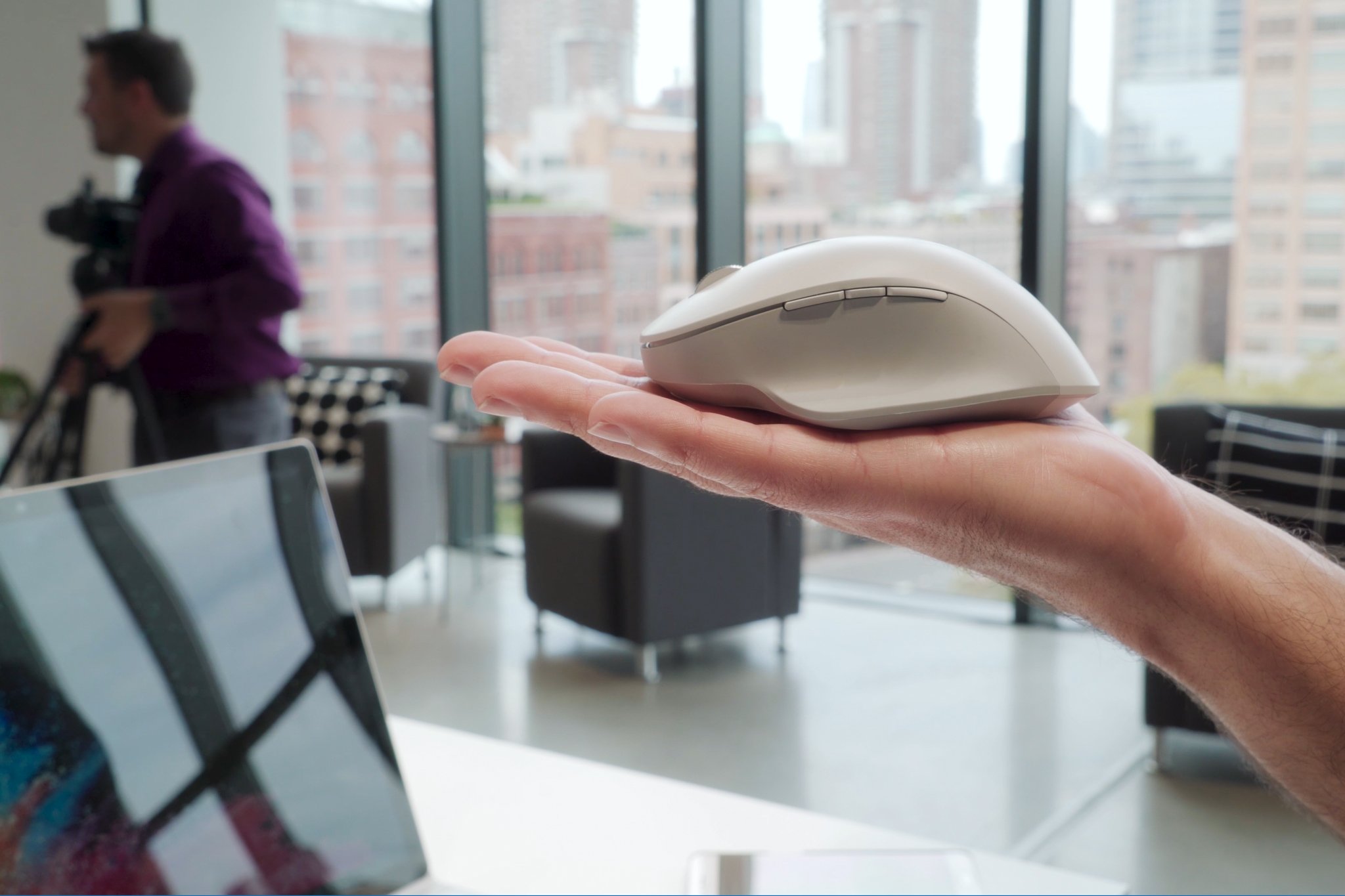Microsoft's new Surface Precision mouse works with three PCs at once
Microsoft's new Surface Precision Mouse is built for use by professionals. And the fact that it can run on three PCs at the same time is not only cool but super useful.

Besides announcing the new Surface Book 2 today, Microsoft also has a new desktop mouse built for those who need to get work done.
Priced at $99, the Surface Precision Mouse is not only ergonomic but it can run on three PCs at once.
Surface Precision Mouse technical specifications
The Surface Precision Mouse looks a lot like the Logitech MX series, especially with the thumb rest and overall ergonomic design. However, Microsoft added some unique features that make the Surface Precision Mouse stand out.
| Features | Surface Precision Mouse |
|---|---|
| Design | Ergonomic desktop |
| Materials | Machined aluminumMolded TPE side grip and thumb rest |
| Buttons | Three customizable |
| Connectivity | Bluetooth 4.0/4.1/4.2 Low EnergyUSB 2.1 |
| Range | At least 16 feet (5 meters) in office environment |
| Power supply | Rechargeable (USB) |
| Battery | Three months |
| Dimensions | 122.6 mm x 77.6 mm x 43.3 mm (L x W x D) |
| Weight | 135 g |
| Compatibility | Windows 10, Windows 8.1, Windows 7 (USB only)mac OS X 10.12+ (USB mode only) |
One feature people will like is the ability to use the mouse through USB to the PC. Many mice can charge through USB, but most still fallback to Bluetooth for connectivity. Some users, however, prefer to avoid any potential latency issues and by plugging in the Surface Precision Mouse directly, the signal goes with it.
The scroll wheel lets users shift between staggered ("clicky") and free-wheel scroll by merely hitting the button behind the wheel. Pressing down on the scroll wheel acts as a middle click.
There are also three user-programmable buttons to the side, including back and forward keys. Not only can you program them through the Microsoft Mouse and Keyboard Center, but you can do so on a per-app basis.
Microsoft is betting those will appeal to people in the Science Technology Engineering and Medicine (STEM) industries, who could use the Surface Precision Mouse with app-specific needs. Users can also program macros or key combinations to the buttons for particular functions.
Get the Windows Central Newsletter
All the latest news, reviews, and guides for Windows and Xbox diehards.
Three PCs at once
Not only can the Surface Precision Mouse be paired to three different computers, it can run on all three at the same time.
Through the Microsoft Mouse and Keyboard Center app settings, users can quickly set the Surface Precision Mouse to run across all three screens. For instance, if you're on a desktop PC you can use the mouse as usual, but leave your laptop open. By mousing over to the edge of the screen, the cursor just continues onto the laptop.
Since many power users run multiple PCs, having just one mouse to control them all should streamline workflow. Logitech has a similar function in its new MX Master 2S (see our review) called Logitech Flow, which does something similar across three PCs too.
The feature worked quite flawlessly when we tried it out, and it should be an excellent selling point.
The only downside is the Microsoft Mouse and Keyboard Center app is not available on Windows 10 S or macOS X. Those users won't be able to leverage many of the multi-screen or programmable button features for the Surface Precision Mouse.
Surface Precision Mouse price and availability
In my short time with the Surface Precision Mouse, I was impressed. It's super comfortable to use, the user-programmable buttons feel great, and working on three computers at once is impressive.
The Surface Precision Mouse should run around $99 and is now available.

Daniel Rubino is the Editor-in-chief of Windows Central. He is also the head reviewer, podcast co-host, and analyst. He has been covering Microsoft since 2007 when this site was called WMExperts (and later Windows Phone Central). His interests include Windows, laptops, next-gen computing, and wearable tech. He has reviewed laptops for over 10 years and is particularly fond of 2-in-1 convertibles, Arm64 processors, new form factors, and thin-and-light PCs. Before all this tech stuff, he worked on a Ph.D. in linguistics, performed polysomnographs in NYC, and was a motion-picture operator for 17 years.
